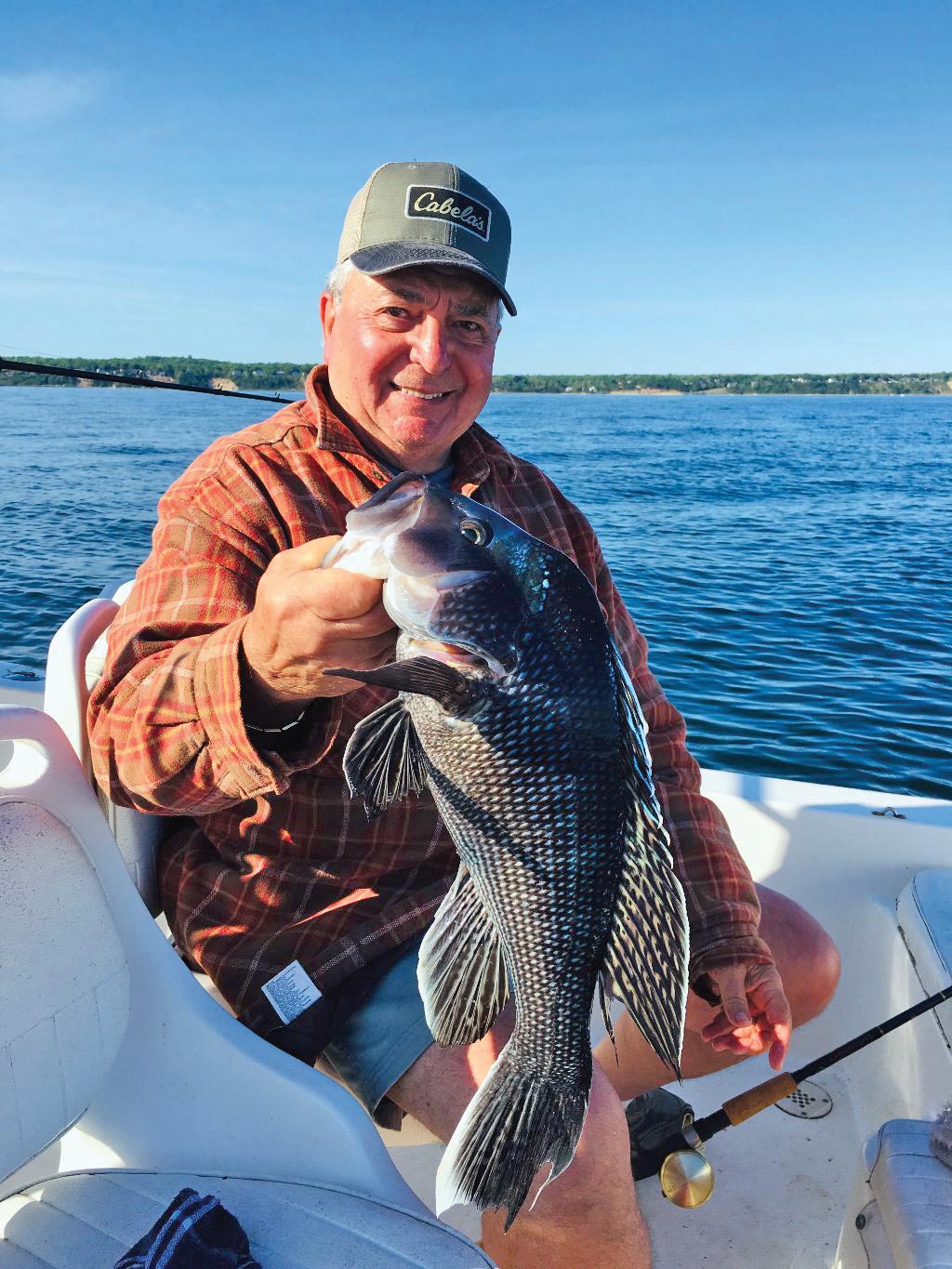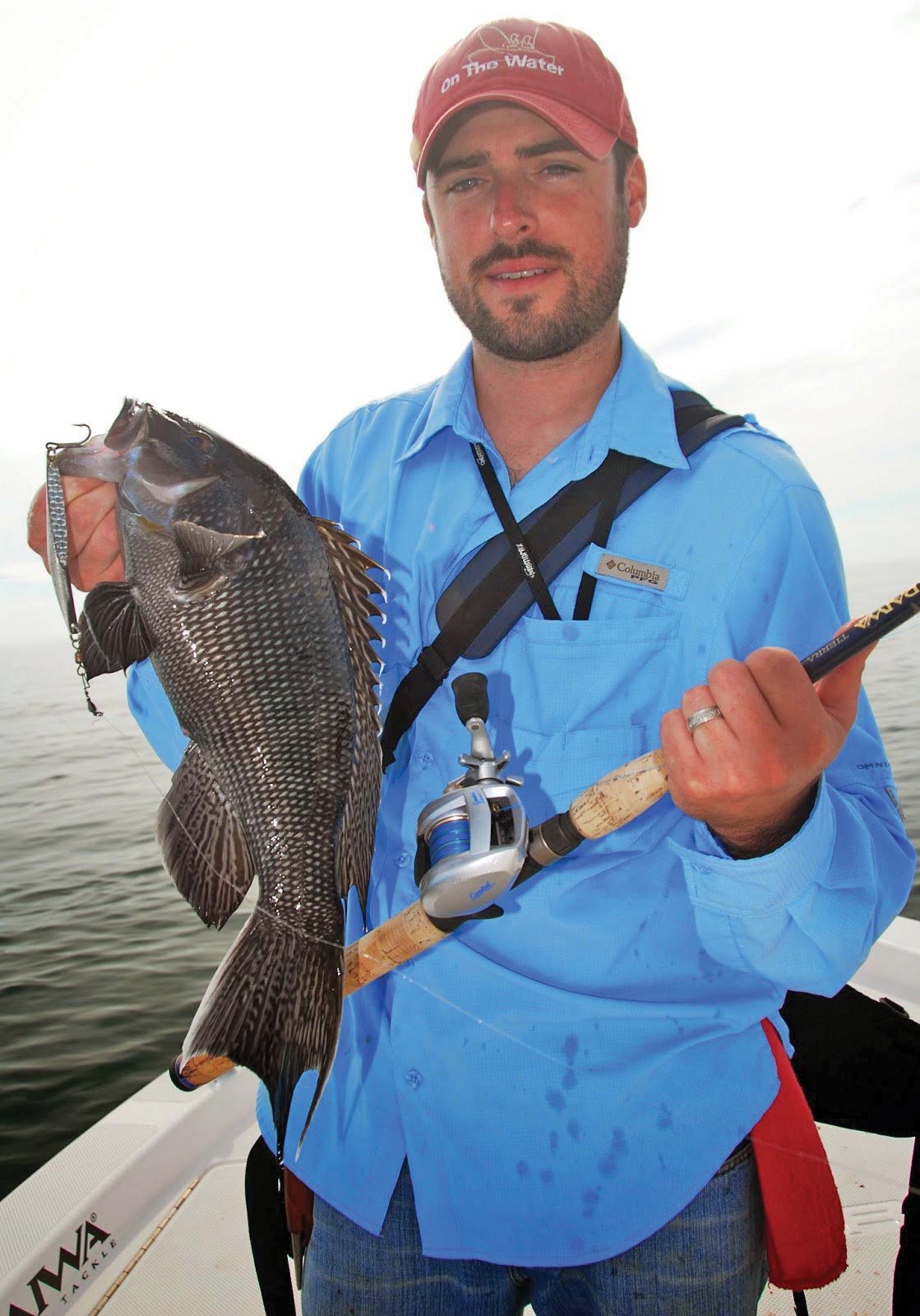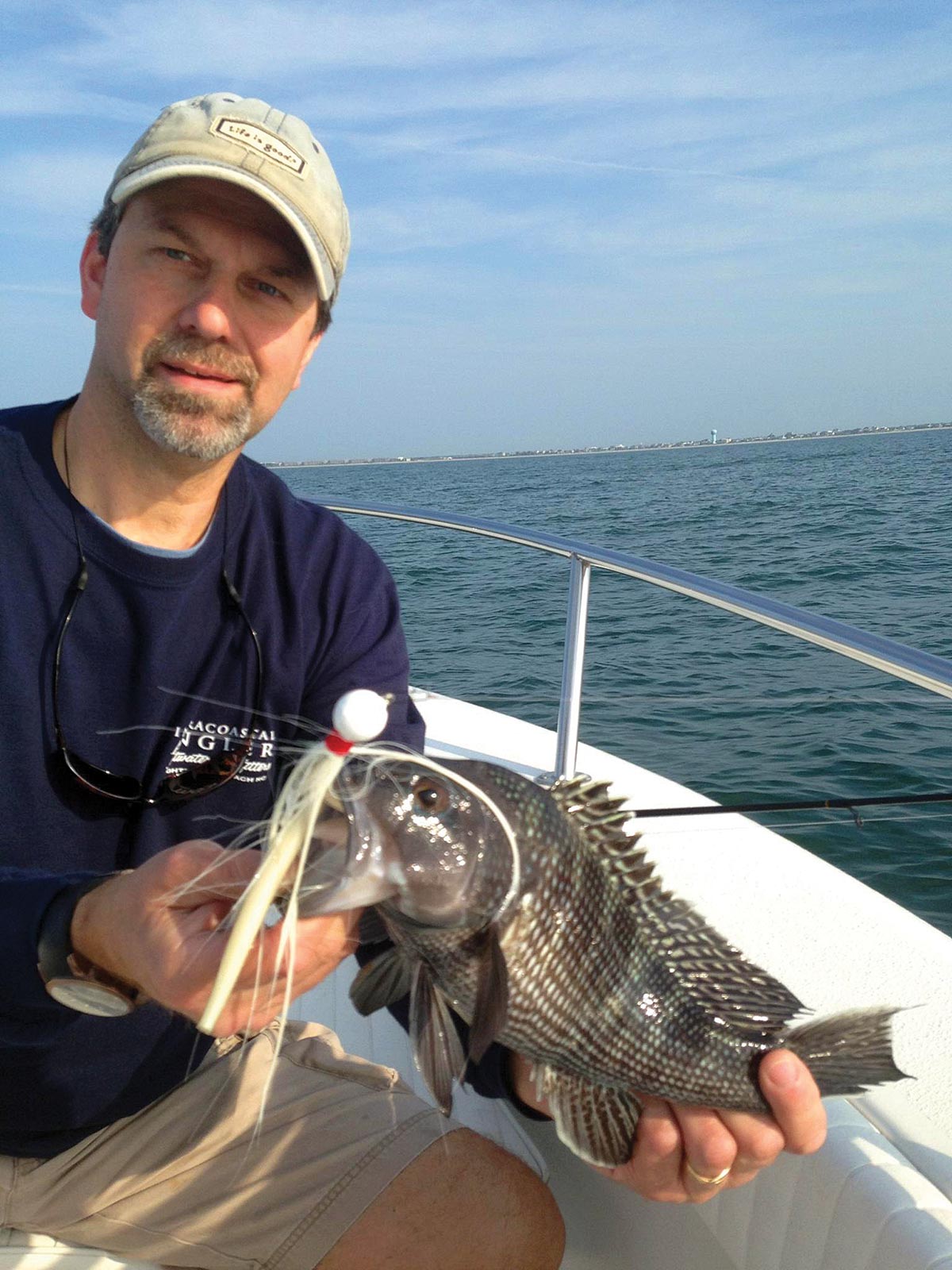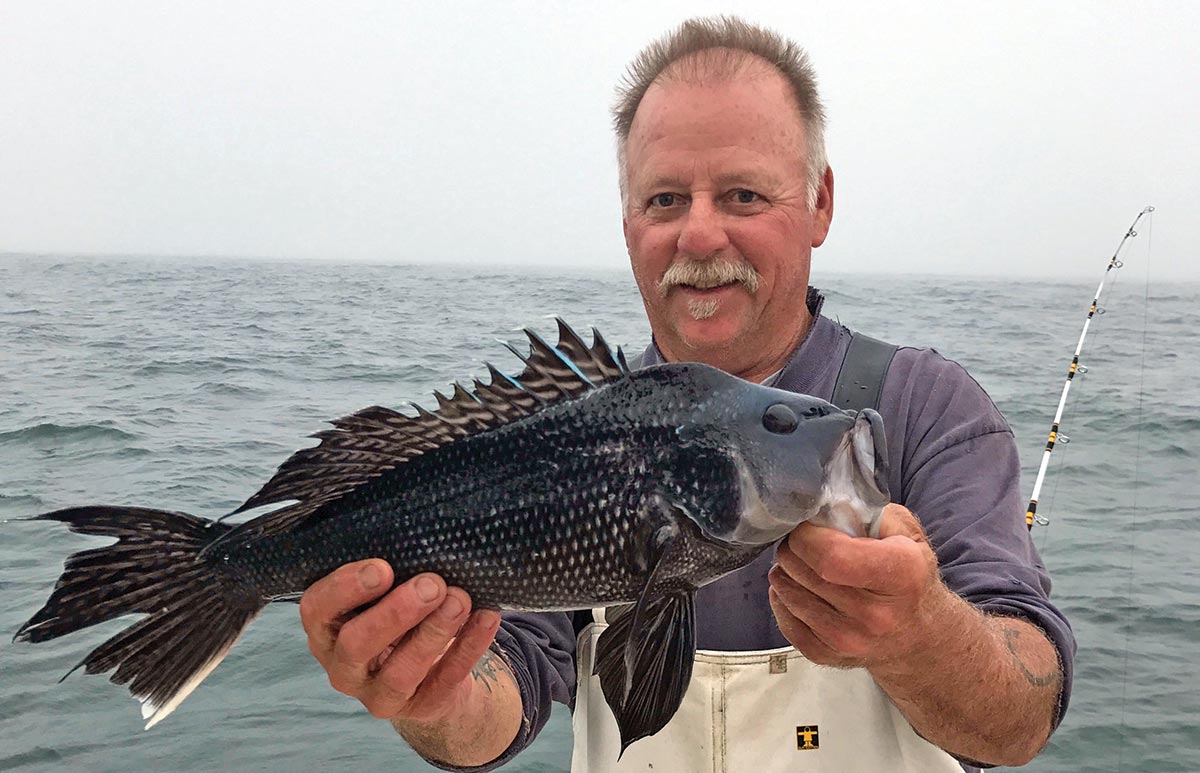
Steer away from crowded reefs and wrecks and find your own rough bottom.
It begins in May as countless sea bass move into the shallow waters surrounding Long Island. These large females move close to shore to spawn before returning to the deeper waters of the ocean and Sound. Unfortunately, the Atlantic States Marine Fisheries Commission (ASMFC) has thrown a curveball at New York anglers with stringent regulations that prohibit the possession of sea bass until June 23. Meanwhile our neighboring states are enjoying great sea bass fishing and liberal creels much sooner than New York. While many of the wrecks and reefs are picked clean of most of the big fish during the opening weeks of the season, there are still many jumbo sea bass lingering on hard bottom areas often overlooked by anglers racing to the reefs and wrecks. Luckily these habitats are within easy reach for most anglers who should have no problem putting together a catch of jumbos when the reefs become dominated with shorts.
A Place of Your Own
It’s common knowledge that sea bass inhabit wrecks, man-made reefs and rock piles, however mussel beds (hard strewn bottom), ocean clam beds and prehistoric bottom also hold their share of humpbacks. Prehistoric bottom refers to areas where dredging has been completed, or is in the process of being worked on, and are usually found about a mile off our South Shore beaches. The dredging is done in order to replace sand on beaches that have been affected by severe erosion or to fill breaches. Once these areas are dredged, it exposes fossilized bottom from prehistoric times. At some point after the Ice Age, this part of the ocean was marshland that over time, sunk into the sea due to erosion and rising ocean waters. Once clear of sand, these pieces of bottom are like craters on the moon, which provide refuge to all types of barnacles and crustaceans, which in turn draw in the chain of sea life, including big sea bass, as well as big fluke. To locate and mark these spots, note where the dredge barges are located, (There are usually a few working anywhere from east to west along the south shore.) and follow the pipe pumping opposite of the pipe leading to the beach. With a depth recorder and GPS, find and mark any sudden drops in depth. Once the barge completes its mission, give it a good month or so and you should start seeing life becoming established. By the following season, these honey holes should be teaming with big fat sea bass and fluke. Best of all, most times, you can call these spots your own. It takes some patience but believe me, it will be well worth it. Along Long Island’s East End, the bottom is tailor-made for sea bass with countless rough terrain consisting mainly of rocks, shell beds and irregular broken bottom.

To Drift or Not to Drift
When fishing over a reef or wreck, anchoring is paramount, unless you don’t mind retying rigs all day. Thankfully, areas with prehistoric and strewn bottoms along with low profile rock piles are much more forgiving with snags, therefore drifting is the best option providing the drift is less than 2 knots. One to 1-1/2 knots is ideal for drifting for sea bass. Most likely the fish are spread over the entire area of structure, so you want to cover as much productive ground before having to pick up and go back for another drift. Should the drift be faster than 2 knots, I strongly suggest shelling out a few bucks to purchase a sea anchor that properly suits the size of your vessel before heading out. A sea anchor will slow the drift dramatically and allow you to stay on a piece a lot longer and will give the sea bass a shot at the bait. If you plan on fishing areas with strong currents such as the east end of Long Island, try planning your trip around the first two hours or the last two hours of a tide when current flow is weakest. Very often, the best bite will occur just as the tide changes, which allows you to stay down near the bottom with lighter payloads.
Gear and Baits
When it comes to eating, sea bass will rarely pass up any type of dinner prospects that may come their way. Clams and squid are the standard baits and of course work well. Small strips of these baits on the hook will do just fine. Try using fresh clams and allow some of the clam belly to hang off the hook. Salted clams are okay when the bite is aggressive; however, when the bite is not, the salted stuff will get snuffed while fresh clam will still produce. Keep in mind that savvy anglers understand that true humpback sea bass love cut fish bait or fish strips such as sea robin or sand shark belly strips.

As for rigs, standard high/low rigs are well suited for drifting. Just be sure the leaders hanging from hooks are short to help prevent tangles. As for tackle, 20-pound conventional or baitcasting outfits are well suited for this fishing. Artificial lures and sea bass go together like peanut butter and jelly, therefore the following recommendations have been specifically designed for deep water fishing on rocks, mussel beds, shell strewn bottom and prehistoric bottom. The Shimano Lucanus Jig has become the standard for anglers who take their sea bass jigging very seriously. This jig has an aerodynamic head design that allows it to sink quickly to the bottom and stabilize it when it is retrieved. The Lucanus Jig also uses the multiple hook system to provide a higher hook-up ratio, and also features durable silicon skirts. The trailers wobble and vibrate when deployed near the bottom. The Butterfly “Flat-Side” Jigs, also from Shimano, have been innovatively designed to perform best when vertical jigging from a drifting boat. The rear/center weight balance design lets the Shimano Flat-Side Jigs fall to the bottom quickly with a swinging motion. The off-set eyeball position allows for the use of two different hooks for an overall better hookup ratio. Both lures come in a variety of colors and sizes to 7 ounces.
Tsunami Facet Jigs are another solid option for those who want to jig their sea bass. The Facet Jig is a high visibility jig that can be danced off the bottom for strike-triggering action. Glowing tentacles in the silicone skirt, light-catching 3-D eyes and a scaled holographic finish (except on the glow jig) make these jigs tough for a sea bass to resist. The Facet Jigs have a natural tendency to circle as they are lifted in jigging. This allows them to move laterally as well as vertically to cover a bit more water. They are fitted with swivel-rigged ultra-sharp VMC siwash hooks and are available in 3-1/2 and 6 ounces, in glow, green and silver.
As for diamond jigs, you can’t go wrong with the Marathon Jigs. The Marathon Diamond Jig has a sleek aqua-dynamic design with durable triple chrome plating, which leaves a long-lasting bright silver finish, and they are also available in a holographic finish design. Top quality Mustad hooks round out the jigs, which range from 2 to 8 ounces. Other options include the Raging Rattler from S & S Bucktails, which has a full glow head and skirt, and an internal rattle, and S&S’s Octopi and Flutter Jigs. All three are very effective on sea bass and fluke.
Tie Them Right
Whatever outfit you may be using, a shock leader consisting of 8 to 10 feet of 30-pound test fluorocarbon should be tied to the main line via an Albright knot. The good ole and reliable improved clinch knot should be tied to your lure of choice, which will round out the terminal end. Although the Lucanus and Butterfly jigs should produce handily without support, lures such as the Facet and the diamond jigs can use a bit of enticement in the way of Berkley Gulp’s swimming mullet in nuclear chicken, chartreuse and new penny.

Flipping and jigging the lures while drifting will undoubtedly conquer all other battles when it comes to quality. Unfortunately, in inexperienced hands, those little gems can succumb to an unforgiving bottom, which can become costly. Unlike fishing with rigs and sinkers, the last place you’ll want to work those jigs is directly over a reef or high-profile wreck bottom. Stick to fishing over scattered small rocks, mussel, clam or oyster beds, and prehistoric bottoms. Allow the jigs to hit bottom and then apply 1-foot lifts with a steady bounce and hold on.
Please understand that those areas that are being dredged can take time to become fertile. The idea is to mark them and come back months later or the following season and you should find that sea bass have taken up residence. In the meantime, if you have a good quality bottom recorder, spend some time exploring and motoring around with an eye on the recorder. Look for those fuzzy or broken marks on the machine indicating rough bottom and you are likely to be pleasantly surprised more times than not.


